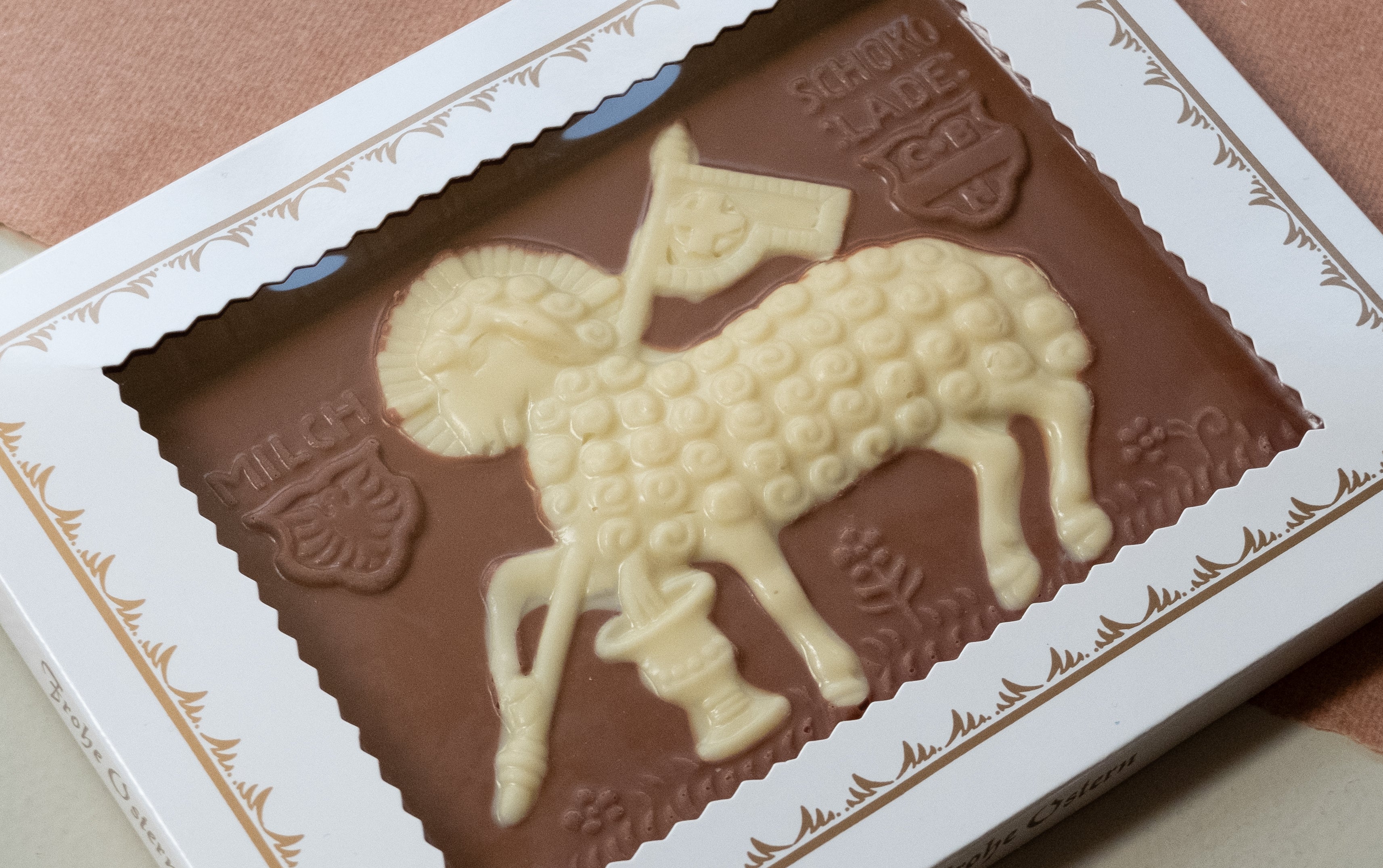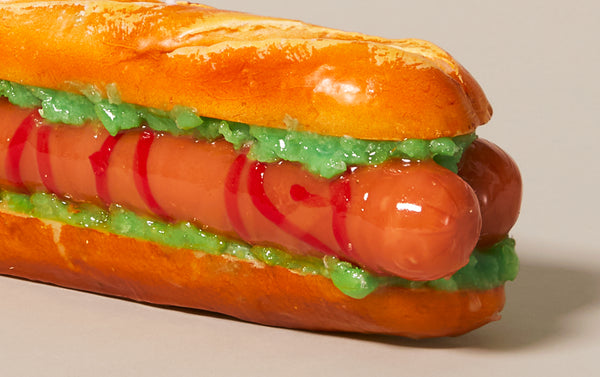Agnus Dei Sacramental chocolate bar, 300g
£16.00 £8.00
We’ve heard religious objects are back in style; is that so ? Well without further ado: enter two layers of appropriately sweet milk and white chocolate, depicting the Lamb and Flag or in latin Agnus Dei, from the bible (John 1:29) when St John the Baptist, upon seeing Jesus, proclaims: "Behold, the Lamb of God, who takes away the sin of the world!" in what is a modern day edible rendition of one of the earliest christian spiritual objects.
Indeed, Easter Sunday marks the celebration of the resurrection of Christ, which comes at the end of Holy Week, an important time in the calendar for Christians. To this celebration belongs the making of the Agnus Dei sacramental (signs, symbols, rituals with spiritual effect) which is believed to have been practiced as early as the 5th century around when Rome was finally made into a Christian city. Previous year's left-over paschal candles were collected, melted down, enriched with myrrh and balsam, and impressed with a lamb on one side and a saint or pope on the other and made into a round or oval disc. Popes would consecrate (blessed and exorcised) these discs on the Wednesday during the Holy Week the first year of their pontificate and every seven years following. They would then distribute the discs on Easter Sunday, often to visiting bishops and Cardinals. With the Lamb of God embossed on them, these discs were seen to act as a reminder of Jesus' sacrifice, to inspire to dwell on the mysteries of 'our' redemption, be moved to praise, venerate, and extol God’s goodness to 'us'. They also were believed to possess many protective powers, including defence from storms, pestilence, fires, and floods, dangers of childbirth, protection against false accusations, shipwrecks, poison and evil spirits..... Some interpret the Agni Dei as a christian effort to ween unenlightened pagans off amulets and charms.
See here the only known British Agnus Dei container with its wax, in the British Museum collection found in London at the Globe Theatre and dated 15th c..
From a historical perspective, and in the British context, the Agnus Dei, also carries political connotations as the importation of said object, which Elizabeth I called "popish trumperies") were banned by the English parliament in 1571, effectively inhibiting the practice of Catholicism in England. The Agnus Dei thus came to represent not only an object of devotion, but an act of defiance against the Elizabethan regime. (to learn more, read this very interesting paper by Cambridge University Press).
With a little less gravitas, and slightly lower stakes, you too can celebrate Easter, renewal, spring, the washing away of sin, by way of this delicious chocolate Agnus Dei and a bit of very interesting catholic kitsch prime for an exploration of ideas on the subject of catholic theology and early European history.
Taste and deliciousness of the chocolate per se, comes highly recommended by Choosing Keeping staff.
Details:
Weight: 300g
Cocoa 35% minimum
Ingredients: sugar, cocoa butter, whole MILK powder, cocoa mass, emulsifier, soy lecithin, natural vanilla extract.
Allergen Advice: see ingredients shown in CAPITALS.
May contain traces of tree nuts and wheat.
Made in Germany







